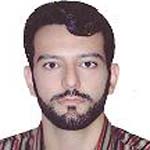The Role of Mirror Neuron on Different Speeds of Basketball Dribbling's Mental Imagery
Author(s):
Abstract:
Introduction
Introduction and aim: Mental imagery is an important skill that athletes should always be applied; especially during competition, with high confidence, using it in order to relieve stress and improving performance. The aim of this study was to investigate the role of mirror neuron on different speeds of mental imagery on basketball dribbling performance.Methods
The research method was semi-empirical manner conducted through a pretest-posttest design. The subjects included 30 female students (average age 22± 1.12) selected through a purposive sampling method and categorized in three groups of rapid-speed, equal-speed, and low-speed imagery. Following the basketball dribble function in pretests, the subjects were involved in imagery for a period of four consecutive days, and were subsequently tested for the real dribble function in the posttests. They were also subjected electroencephalographic assessment during imagery, focusing primarily on the reaction of the mirror neurons within the process. The findings were then analyzed using the intragroup analysis of variance.Results
The results demonstrated an improved dribble function in all groups (p≤0.05). However, investigation of the effect size indicated a significant improvement in the groups with slow-speed and equal-speed imagery compared to those receiving high-speed imagery. Mu rhythm suppression in areas C4 and Cz were observed in all groups (p≤0.05). C3 area active just in slow-speed group.Conclusions
Mental imagery cause required movements encoding for performing skill in the brain by activating mirror neurons. In brain, this movement encoding leads to facilitate motor skills. Keywords:
Language:
Persian
Published:
Journal of Neuropsychology, Volume:2 Issue: 1, 2016
Pages:
55 to 72
https://magiran.com/p1677595
سامانه نویسندگان
مقالات دیگری از این نویسنده (گان)
-
Psychometric Properties of Persian Version of the Self- Evaluation of Teacher Effectiveness Questionnaire in Physical Education
*, Seyed Mohamadreza Mousavi, Hesam Ramezanzadeh, Bita Arabnarmi
Journal of Sport Management and Motor Behavior, -
Optimizing Motor Learning in Teenage Girls through Autonomy Support, Enhanced Expectations, and External Focus of Attention: Testing the OPTIMAL Theory of Motor Learning
Fatemeh Velayati, Seyyed Mohammadreza Mousavi, Adeleh Ahmadinejad, *
Journal of Sports Psychology, -
The Effectiveness of Physical Activity on Mental Health and Mindfulness in Veterans and Disabled
*, Ali Asghar Arastoo, Shahla Zahednejad, Nasrin Teymoori, Mitra Derakhshesh
Journal of Motor Control and Learning, Winter 2022 -
The effect of transcranial Direct Current Stimulation on anxiety in Veteran and Disabled Athletes
Ali Asghar Arastoo, Shahla Zahednajad *, , Saeed Alboghebish
Medical Journal of Mashhad University of Medical Sciences,




